How Community Changemakers are Breaking the Rules:
Evaluating Systems Change and Place-Based initiatives
Co-creator of Australia’s ‘game-changing’ Place-Based Evaluation Framework, Dr Jess Dart shares what these approaches are and why they’re the north star for community impact.
What exactly are place-based approaches?
To understand place-based initiatives we first need to understand systems change. While evaluation grew out of programs – a defined set of activities leading to specific outcome – systems change approaches are about breaking the rules. They work across programs, trying to address the deeper, systemic causes of a problem.
Let’s say you’re trying to improve year 12 outcomes or get young people to stay in school. A program would normally be bound within the school context, but if you really want to solve this problem and get kids to do well at school, you have to get outside the school to work out what is going on in the system. Maybe there are issues at home, maybe it’s the economy. Systems change is about jumping around to try and get to the underlying causes of the problem.
A place-based approach is a systems approach within a defined location, such as a suburb or small town. Restricting the scope of work to a geographic location can help in pinning a systemic issue down to a manageable size.
Another feature of place-based approaches is that they are community-centric. Community members are involved in the decision making, with their aspirations for the community anchoring the scope of the work. These aspirations are the ‘north star’ for place-based approaches.
Is there any stage where a place is too big? The State of Victoria?
I’ve heard place-based approaches are best in populations between 2000 and 40,000 or even up 200,000. But not the whole of Victoria? No, you can’t chase a problem around in such a big area.
What if the population is spread out, e.g. the Mallee region?
It’s more about population than location size. Complexity can be greater over a wider area, but you’re still trying to chunk off the work by community priorities rather than by sector. We’ve seen such approaches working well in bigger regions with lower populations. More important than geographical size is determining if there is a community that connects and identifies as a community. It’s possible to do this work across a community bonded more by theme than location – which is why some people refer to it as systems change approach rather than place-based.
Can you talk about who else is involved alongside the community?
The whole point is that you collaborate with everyone who is part of the problem to try and address the underlying causes. So for our school example, rather than just working with principal, the teachers, the kids and even parents, you may also work with local business owners and higher education institutions. You have to think more broadly about the causes of the problem, and that often takes you further afield. It’s more collaborative and multi-sectoral, but key is that the people you choose to engage with need to be bound by the aspirations of the community.
Is this a new way of working?
Nothing is ever really new, but place-based approaches offer a few new twists. It builds on years of community development and community strengthening. The impact sector has picked a lot of the low-hanging fruit and solved a lot of issues, but our current services are not necessarily working with of the really gnarly social and environmental issues. We’re spending money on programs that are providing services over impact, so we need to re-think how we work, especially as the challenges and environments we work with become ever more complex.
How can you tell if these are working?
Demonstrating lasting community change means shifting the dial for key population-level indicators – which might take 10 or so years. And that’s simply too long to wait to see if you’re achieving impact.
So while you need to set ambitious high-level aims – especially at the beginning to help mobilise people – you also need to dig into the evaluator’s toolkit to help you check you’re on track. For example, making sure you have a sound and detailed Theory of Change: what conditions would we need to see in place for this change to occur? What would be changing in the system if we were on track to achieving those population-level changes? What would the phases of change be? What would we expect to see changing at the beginning, middle and end of our intervention? These are critical evaluation questions, which also need to be supported by different types of evaluation at the different stages and levels of maturity of your initiative.
What does your course on this cover?
We’ve developed a practical framework to help people better understand and evaluate place-based initiatives. We’ll explore the basics of place-based approaches before moving onto the theory of change, and the tools available for tracking and understanding changes across the different phases.
We’ve also got this neat little device called a ‘concept cube’, which helps you understand the different lenses you may need to apply depending on your community’s context, as well as a set of evaluation questions. It’s part of a mega toolkit that we’ve assembled from the literature and from our own bespoke materials.
Who should do look at doing this course?
- Anyone who’s working on a place-based or systems change initiative wanting to better track and demonstrate impact.
- Anyone wanting to expand their skills beyond traditional program evaluation, and perhaps challenge themselves to think differently about their approach.
- Anyone looking to embed learning and innovation in collaborative and collective impact approaches.



